Mark Sisson's Blog, page 250
September 4, 2015
So Long Chronic Cardio, the Primal Lifestyle Is My New “Go To”!
It’s Friday, everyone! And that means another Primal Blueprint Real Life Story from a Mark’s Daily Apple reader. If you have your own success story and would like to share it with me and the Mark’s Daily Apple community please contact me here. I’ll continue to publish these each Friday as long as they keep coming in. Thank you for reading!
 WAY back in the 70’s, I jumped on the running bandwagon. Energized, invigorated, and inspired, running became part of my life, my “go to.”
WAY back in the 70’s, I jumped on the running bandwagon. Energized, invigorated, and inspired, running became part of my life, my “go to.”
Feeling “blue”? Go for a run!
Feeling “fat”? Go for a run!
Feeling “bored”? Go for a run!
I was going to run forever – I had the golden ticket to aging gracefully!
In ’97 I ran my first (and what turned out to be my only) marathon. I had visions of doing one marathon a year, glancing sideways at the possibility of an ultra. My body had other ideas, however.
Most runners know and experience physical obstacles of some sort, but usually we can find our way back on the literal and figurative track! I got back to running again when a friend invited me to do a RAGNAR! What a trip! I was re-hooked!
I started planning for a half-marathon for my 50th birthday. My training felt a lot different than it had 13 years ago, though. But I pushed along, ran my half, and celebrated finishing. Golden ticket in hand, I started training for the next half-marathon!
However, training was not getting any easier and pain was setting into new places. I spent the next two years searching out the right massage and/or physical therapist who would get me to where I could run pain free. Wasn’t happening. (I should also mention that strength training was not part of my half-marathon training. I just figured I just needed to run MORE.)
In the meantime, menopause was revving up and taking the lead. Yes, menopause is an obstacle that needs some savvy navigation. How was I going to tackle this obstacle without my “go to,” my “golden ticket?”
About this time, a co-worker and my hairdresser told me about Abstract, a place in town that does “precision exercise” in just 15 minutes. Unbelievable – right?
Precision exercise is strength training based on “Power of Ten” and “Body by Science.” I voraciously read both books and learned why my training was not the same as 13 years ago. (Sarcopenia)
These books also mentioned the “Paleo Diet” in their nutrition discussion. This is where my discovery of the Primal lifestyle and Mark’s Daily Apple drops in! Not having heard of “Paleo” as a diet before, I jumped on a search engine and discovered MDA. I have been an Apple junkie ever since!
I voraciously read the free e-books and the blogs put out by MDA. I couldn’t read enough. I dropped 10 pounds (mostly that stubborn belly weight) in the first month. My menopause symptoms seemed less intense. I felt more confidence in my daily routine because I felt better and stronger than I had in a long time. Relearning how to cook and eat was new and exciting. MDA was my new “go to.”
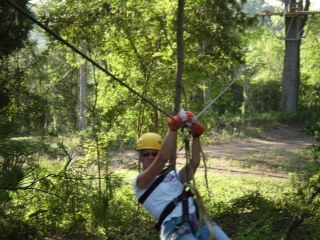
I continued “precision exercise” for awhile, but have since moved to another gym where I do more body weight exercises (push-ups, squats, planks and a plethora of variations!). There are several references to this type of training at MDA. I really like the added challenges of coordination and balance.
I am running pain free these days, though not quite the same distances that I used to run. I don’t need to. I feel too good.
I am maintaining my Paleo/Primal eating strategy. It is SUSTAINABLE AND SMART! If I need some information and/or motivation, I go to MDA and can pretty much be guaranteed an answer to my question or a renewal of my energy.
The Primal lifestyle is my new “go to!” It works! I truly believe it helped me through menopause.
Two years later, I am grateful for not only the paleo diet, but the Primal lifestyle, especially the sleep, fitness and fun rules! It’s a total package.
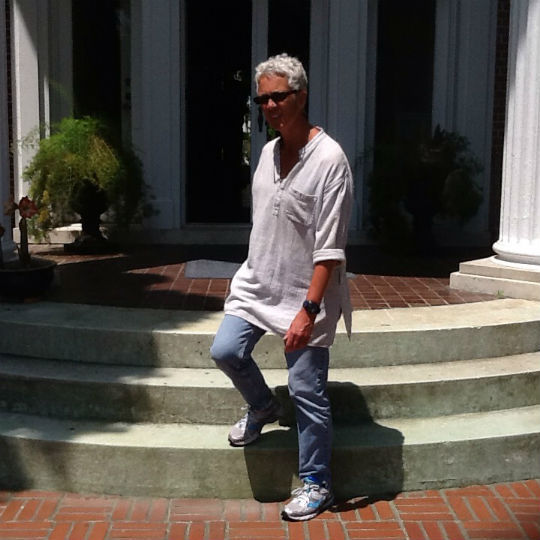
Nancy




So Long Chronic Cardio, the Primal Lifestyle Is My New “Go To!”
It’s Friday, everyone! And that means another Primal Blueprint Real Life Story from a Mark’s Daily Apple reader. If you have your own success story and would like to share it with me and the Mark’s Daily Apple community please contact me here. I’ll continue to publish these each Friday as long as they keep coming in. Thank you for reading!
 WAY back in the 70’s, I jumped on the running bandwagon. Energized, invigorated, and inspired, running became part of my life, my “go to.”
WAY back in the 70’s, I jumped on the running bandwagon. Energized, invigorated, and inspired, running became part of my life, my “go to.”
Feeling “blue”? Go for a run!
Feeling “fat”? Go for a run!
Feeling “bored”? Go for a run!
I was going to run forever – I had the golden ticket to aging gracefully!
In ’97 I ran my first (and what turned out to be my only) marathon. I had visions of doing one marathon a year, glancing sideways at the possibility of an ultra. My body had other ideas, however.
Most runners know and experience physical obstacles of some sort, but usually we can find our way back on the literal and figurative track! I got back to running again when a friend invited me to do a RAGNAR! What a trip! I was re-hooked!
I started planning for a half-marathon for my 50th birthday. My training felt a lot different than it had 13 years ago, though. But I pushed along, ran my half, and celebrated finishing. Golden ticket in hand, I started training for the next half-marathon!
However, training was not getting any easier and pain was setting into new places. I spent the next two years searching out the right massage and/or physical therapist who would get me to where I could run pain free. Wasn’t happening. (I should also mention that strength training was not part of my half-marathon training. I just figured I just needed to run MORE.)
In the meantime, menopause was revving up and taking the lead. Yes, menopause is an obstacle that needs some savvy navigation. How was I going to tackle this obstacle without my “go to,” my “golden ticket?”
About this time, a co-worker and my hairdresser told me about Abstract, a place in town that does “precision exercise” in just 15 minutes. Unbelievable – right?
Precision exercise is strength training based on “Power of Ten” and “Body by Science.” I voraciously read both books and learned why my training was not the same as 13 years ago. (Sarcopenia)
These books also mentioned the “Paleo Diet” in their nutrition discussion. This is where my discovery of the Primal lifestyle and Mark’s Daily Apple drops in! Not having heard of “Paleo” as a diet before, I jumped on a search engine and discovered MDA. I have been an Apple junkie ever since!
I voraciously read the free e-books and the blogs put out by MDA. I couldn’t read enough. I dropped 10 pounds (mostly that stubborn belly weight) in the first month. My menopause symptoms seemed less intense. I felt more confidence in my daily routine because I felt better and stronger than I had in a long time. Relearning how to cook and eat was new and exciting. MDA was my new “go to.”

I continued “precision exercise” for awhile, but have since moved to another gym where I do more body weight exercises (push-ups, squats, planks and a plethora of variations!). There are several references to this type of training at MDA. I really like the added challenges of coordination and balance.
I am running pain free these days, though not quite the same distances that I used to run. I don’t need to. I feel too good.
I am maintaining my Paleo/Primal eating strategy. It is SUSTAINABLE AND SMART! If I need some information and/or motivation, I go to MDA and can pretty much be guaranteed an answer to my question or a renewal of my energy.
The Primal lifestyle is my new “go to!” It works! I truly believe it helped me through menopause.
Two years later, I am grateful for not only the paleo diet, but the Primal lifestyle, especially the sleep, fitness and fun rules! It’s a total package.

Nancy




September 3, 2015
10 Food Pairings That Make Surprising Nutritional Sense
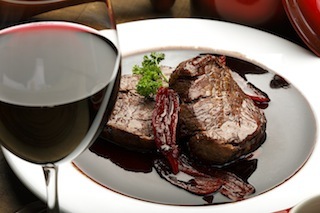 Some foods and flavors are just made for one another. Bacon and eggs. Strawberries and cream. Basil and tomato. Oil and vinegar. Sweet and sour. The list goes on and on. But what’s behind these classic and nearly universal combinations? Does taste alone drive the decision to, say, add fresh herbs to a charred piece of meat? And if pairings are driven by taste, which sounds reasonably, could it be possible that healthy pairings naturally taste better because we’ve evolved an innate draw towards these powerful combinations? The jury may still be out on that one. Nevertheless, some foods, when taken together, make surprising nutrition sense.
Some foods and flavors are just made for one another. Bacon and eggs. Strawberries and cream. Basil and tomato. Oil and vinegar. Sweet and sour. The list goes on and on. But what’s behind these classic and nearly universal combinations? Does taste alone drive the decision to, say, add fresh herbs to a charred piece of meat? And if pairings are driven by taste, which sounds reasonably, could it be possible that healthy pairings naturally taste better because we’ve evolved an innate draw towards these powerful combinations? The jury may still be out on that one. Nevertheless, some foods, when taken together, make surprising nutrition sense.
Let’s take a closer look.
1. Meat and dairy.
Some cultures, like Jews, severely restrict their pairing, going so far as to bake it into their scriptural doctrine. Others, like the Masai and the Mongolian nomads, base their diets on meat and milk and actively eat the two together. Are these just arbitrary religious or dietary prescriptions, or is there something more going on?
Let’s speculate. Ancient Israelites, the ones who actually wrote the scriptures, were settled agrarians. They ate lots of grains and while they kept animals, they were more useful as sources of renewable calories — milk — than meat. But the thing about dairy is that it contains calcium, which is a potent inhibitor of iron absorption. What little meat they did eat had to be consumed without iron chelators to maximize iron absorption and utilization.
But iron can be dangerous in excess. People with hereditary hemochromatosis, or iron overload, are at an elevated risk for heart disease, cancer, and early death. In societies like the Masai or the Mongols for whom meat was a staple, regularly eating it with dairy likely modulated the amount of iron they absorbed from their otherwise iron-rich meals.
I’m not suggesting this explains the dairy-meat restrictions in the Torah or the dietary habits of pastoral nomads. It’s just speculation. But the fact remains: dairy chelates the iron in meat when the two are eaten together, and this can be a positive or negative health effect depending on your iron status.
2. Red meat and red wine.
Although I only occasionally drink anymore, and I don’t really go for pounds of steak in a sitting, whenever I do sit down for a juicy grass-fed rare ribeye or NY strip, I make it a point to pour a glass of some big spicy red. A cab, maybe a zin or a syrah. I can’t not have wine with good steak. The two are just made for each other, right? Almost as if there’s something more to it than mere taste.
As you probably know, cooking meat can form carcinogens. These carcinogens become more prominent and numerous when meat is cooked too long, at too high a temperature, or without adequate preparation using antioxidant-rich marinades. What if the cooking’s out of your hands and you’re forced to eat what others have prepared? What if you’re faced with a charred steak?
Drinking red wine with your meat can inhibit the activity of cooking carcinogens in your stomach. It’s probably far better to avoid forming carcinogens at all, but red wine is a nice insurance plan if you can’t avoid them. Plus, it’s delicious.
3. Steak and green vegetables.
Another must-have addition to a steak dinner is something green. Spinach, broccoli, kale, asparagus — if it’s green and comes from the ground, I’m all over it. Turns out that another way to inhibit the activity of charred meat-borne carcinogens in the stomach is with green vegetable consumption. Namely, the greens and the crucifers. Both cruciferous vegetables and salad greens reduce the damage wrought by heterocyclic amines formed during cooking meat.
4. Salad and salad dressing.
That spartan office mate who thinks he’s winning the health battle by somehow managing to eat a plain salad sans dressing isn’t just flagellating himself, he’s flagellating himself for no good reason. Fat improves nutrient absorption from raw vegetables.
It could be avocado. It could be a piece of fatty meat. It could be a handful of nuts scattered amidst the leaves. It could be your basic olive oil and vinegar dressing. Whatever you do, eat your raw vegetables with a significant chunk of healthy fat to maximize nutrient absorption and assimilation. Salads are healthy so long as you eat them the right way.
5. Acid and starch.
Sushi rice spiked with rice wine vinegar (or allowed to slightly ferment). Sauerkraut and bunned brats. Pickled vegetables before Korean bbq. In many, perhaps most cuisines, acids (vinegars, citrus juices, fermented foods) are traditionally served either before or with a starch. Part of it is because doing so is delicious. Kimchi goes great with grilled short ribs and a little white rice. But these traditions may also have health benefits.
As it turns out, consuming acidic foods alongside or before starches reduces postprandial blood sugar. Pickled vegetables consumed before or during white rice consumption lowers the blood sugar response by 27% and 25%, respectively. Vinegar itself, regardless of the origin, lowers the blood sugar response to a carb-rich meal, improves the glucose tolerance, and even increases the satiety of a meal when taken before or during the meal. And according to a recent study of type 2 diabetics, simply consuming vinegar can reduce the postprandial glucose response and increase glucose uptake of skeletal muscle in type 2 diabetics.
6. Turmeric and black pepper.
Anytime turmeric appears in a national cuisine’s dish, black pepper’s not far behind. Curry employs liberal amounts of each, enough that it’s not really curry without both. So next time you add turmeric to something — soft boiled eggs, perhaps — add a nice big pinch of finely ground black pepper. I guarantee it will taste better and be better for you than either spice alone.
Turmeric gets a huge amount of press for its health benefits. The most famous turmeric component is curcumin, which forms the basis of most turmeric health supplements. But here’s the thing about curcumin: we can barely absorb it without exogenous agents. And the most popular bioavailability-increasing agent is piperine, a component of regular old black peppercorns.
7. Coriander and cumin.
From Indian curries to Mexican carne asada, Moroccan tagines to American chili to Northern Chinese lamb, coriander and cumin are popular spice pairings across a wide range of world cuisines. Might special synergistic properties arise when one combines the two spices?
Yes. Alone, cumin is a powerful spice with many health effects, mostly owing to its polyphenol content. I’ve already written about cumin and its anti-diabetic, hepatoprotective, and hypocholesterolemic effects. And coriander has been shown to improve blood lipids, lower postprandial blood sugar, and display powerful antioxidant and anti-carcinogenic effects.
When you combine cumin and coriander, interesting things happen. Antioxidant activity is magnified. The combo is also a potent antimicrobial agent, more effective than simply adding the individual effects of each spice together. Importantly, cell line and animal studies showed that this combination, while being more “powerful,” displayed no toxicity. A variety of essential oils, herbs, and spices were studied, but the cumin/coriander combo was the most synergistic.
8. Cinnamon and sugar.
Primal? Not exactly, unless you’re using flint tools to shave wild cinnamon bark into a bowl of evaporated sugar cane condensation. But the combo does taste really, really good together, and there may be a nutritional justification for that fact.
Cinnamon lowers blood sugar by a couple different mechanisms. First and probably most importantly of all, it improves insulin sensitivity and reduces insulin resistance. But cinnamon also reduces absorption of consumed carbohydrates by inhibiting some of the digestive enzymes that break down incoming carbohydrates. It even contains an insulin mimetic, a compound that acts just like insulin in the body. In short, cinnamon improves a person’s ability to tolerate, metabolize, and handle sugar — the very substance it goes really well with.
9. Fat and spices.
Although some cuisines leave this step out, a primary step of any good Indian or Thai cook is to toast the spices in cooking fat before anything else. In Indian cooking, they’ll often start with whole mustard seeds toasted in ghee or coconut oil. For the first step of making good Thai curry, they’ll cook the curry powder in oil to create a paste. The reason cooks do this is to release oleoresins, full-flavored fat-soluble spice extractions. After the oleoresins have been extracted and the rest of the ingredients are added to the mix, any water-soluble spice compounds are also released upon further cooking.
Oleoresins don’t just taste and smell great; they also exhibit unique antioxidant activity. Oleoresins from black cumin seeds, for example, are potent scavengers of free radicals. Cinnamon oleoresins possess at least 17 bioactive components, ginger oleoresins have antimicrobial, anti fungal, and antioxidant properties, and turmeric oleoresin appears to be more anti-diabetic than the essential oil or curcumin alone.
10. Meat and broth-based sauces.
Anytime I cook meat, I’m making a sauce to go along with it. Maybe it’s a reduction, where I reduce bone broth to a syrup before adding fat to thicken and enrich. Maybe it’s a gravy, where I scrape up the browned bits from the bottom of the pan, add broth, reduce, and sometimes finish with a safe starch (potato starch mixed in water to form a slurry works really well here) to really thicken it. Also, simply braising a gelatinous cut of meat produces a thick sauce by the end, no extra work required. I’ll often add an acid (citrus juice, wine, vinegar), too. These sauces really enhance the meal.
Turns out they don’t just taste good. They actually make meat healthier to eat.
See, muscle meat (steaks, roasts, ground beef, etc) is high in an amino acid called methionine. Methionine is essential, meaning we can’t synthesize it in our bodies and must consume it in the foods we eat. We need it to build muscle and maintain health. But our methionine intake must be balanced with enough glycine, another amino acid. Methionine toxicity is countered with glycine consumption and the simple addition of adequate glycine to a mouse’s diet mimics the life extension mice enjoy from methionine restriction. Overall, methionine in the absence of glycine can be described as “inflammatory.” Glycine is most abundant in connective tissue, bones, and gelatin. Bone broth-based sauces are probably the easiest and most delicious avenues for glycine consumption.
I just love stuff like this. The world can be confusing and contradictory and chaotic, but sometimes it’s nice when things just sort of fall into place and make sense.
Okay, now I’m hungry. Take care and be sure to leave your favorite food pairings down below (plus, any health benefits you think they might confer)! Maybe there’s even another post on the topic, if we get enough potential pairings to investigate.
Thanks for reading, folks.
Prefer listening to reading? Get an audio recording of this blog post, and subscribe to the Primal Blueprint Podcast on iTunes for instant access to all past, present and future episodes here.




September 2, 2015
Why Getting Fit Isn’t the Best Exercise Motivation (and 10 Better Reasons to Move Today)
Reminder: Today is the last day to get Don’t Just Sit There! for $10 off and with several bonus items. In this online multimedia program you’ll learn how to build a perfect workstation, how to sit better, how to stand better, and how to work out on company time. The special offer expires at 5 PM PST today. Gain instant access here today!
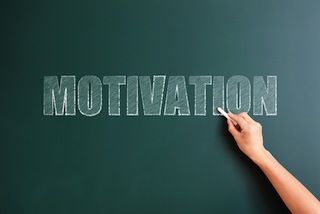 We’re told time and again that in order to get healthy we need to let go of our “lower” instincts (e.g. conserving energy on the couch or preferring to go out and have fun) and embrace future goals. We need to take things seriously – have concrete objectives and clear steps to execute them. It’s about getting down to business and whipping ourselves into shape through the grit of sweat and discipline. Or?
We’re told time and again that in order to get healthy we need to let go of our “lower” instincts (e.g. conserving energy on the couch or preferring to go out and have fun) and embrace future goals. We need to take things seriously – have concrete objectives and clear steps to execute them. It’s about getting down to business and whipping ourselves into shape through the grit of sweat and discipline. Or?
Sure, a proclivity to plan for the future and to favor self-control over momentary whim, research shows, will get us far on the health front (PDF).
It’s hands down the best mindset when we have emotional access to that “higher” self. The stubborn truth is, I’ve never met someone who could maintain this every day. Most days I get bored of it myself in all honesty.
Like it or not, research has shown that health isn’t an effective incentive for most people to consistently exercise. In fact, people whose primary aim for exercise is health or weight loss end up investing the least time actually following through.
So, if the typical rationales aren’t the most effective or reliable motivators, then what is? According to the research, we tend to be better off finding our initiative in the “affective outcome expectations” – the attitudinal and perceived benefits to our lives. To put it simply, if it makes us feel better on some level, we’re more likely to follow through.
In keeping with this pattern, the more immediate the perceived benefit, the more powerful and influential it is on our behavior. The same short-term gratification that gets blasted as our health’s worst enemy can actually be harnessed for good. Go figure…maybe our primary instincts don’t always have to drive us into the ditch.
In that spirit, let me throw out 10 short-term incentives for getting one’s duff off of the couch – or office chair. Forget all about your blood pressure or cancer risk or cardiovascular conditioning. Forget the term body fat or the principles of metabolic functioning. What matters in this list is the here and now – same-day benefits if you will.
You’ll come away from a single workout with better attentional processing, working memory (PDF) and motor memory.
You’ll enjoy a brighter mood and less anxiety for the next few hours – even if you keep it simple with a slow jog or a brief walk outdoors.
Can anyone say post-workout glow – with all the compliments that come with it?
You’ll be able to “walk off” or get some distance from whatever emotional stress is zapping your mental energy.
If you’re like subjects of one study, you’ll experience a significant boost to your body image after just one resistance training session. (Note: a single bout of cardio training didn’t offer the same enhancement.)
You’ll have more self-control – and higher brain function – after a workout thanks to the enhanced blood and oxygen flow to the pre-frontal cortex.
A single workout can offer hypoalgesic effects (temporary pain relief) for those who experience chronic pain.
A bout of exercise primes you for sexual arousal post-workout. Just sayin’.
Finally, according to one study on sedentary women (who had not been diagnosed with insomnia like sample groups in a previously publicized study), you may sleep better even after a single bout of moderate exercise.
Bonus: how about just having fun? Can we dare to drop the interest in physical benefits period and just go out and have a good time with an active pick-up game of whatever sport we enjoy or a competitive run or a some MovNat inspired antics that make the neighbors stare?
Seriously, sometimes the best motivation is the seemingly most rudimentary or even irrelevant. Move around the ways that offer you the most fun and excitement – and forget the rest. Happy primate equals healthy primate. How much more Primal can it get?
What does your daily motivation look like when it comes to fitness? Are you more of a goal-oriented person, or do short-term incentives work better for you? Share your thoughts on the board, and thanks for reading, everyone. Have a good end to the week.




September 1, 2015
13 Ways to Move More Throughout the Day (Even While at Work)
 This is a guest post from expert biomechanist Katy Bowman, author of
Don’t Just Sit There!
Tomorrow, Sept. 2, is the final day to receive the $10-off early-bird discount and several bonus items when you purchase the online multimedia program Don’t Just Sit There! Learn all the details here and gain access today!
This is a guest post from expert biomechanist Katy Bowman, author of
Don’t Just Sit There!
Tomorrow, Sept. 2, is the final day to receive the $10-off early-bird discount and several bonus items when you purchase the online multimedia program Don’t Just Sit There! Learn all the details here and gain access today!
What research has demonstrated in the last few years is that people aren’t either active or sedentary—they can be both. Even the active people are, by a new definition coined in movement research, actively sedentary.
Our totally body movement often tends to boil down to what we do for a bout of exercise each day. Trying to extract all of your movement needs from one or two hours of daily exercise is like trying get all your dietary needs from a single daily meal crafted from the same handful of foods every day. This approach just won’t do.
In light of this data on active sedentarism, it is clear that the solution to our movement deficiencies lies outside of our time dedicated to exercise. We all need to become more physically active throughout the day, and move more of our parts in varied ways, in order to provide the mechanical inputs (i.e. movement nutrition) your body needs to thrive.
Here are thirteen ways you can get more movement into your day:
Don’t “run” errands in your car—walk them. Combine your “exercise time” with your “errand time” and walk to get groceries, mail packages, and see friends whenever possible. What seems like a drag will become a habit, and your habit will become a pleasure as you reconnect with your inner walker and your neighborhood too.
Walk to work if you can (even part of the way—can you get off the subway one stop early?), and also walk at work. Take phone meetings on your cell outside, and ask colleagues to join you for walking meetings. You’ll be more energetic and creative in motion.
Create a dynamic workstation—if you’ve picked up a paper in the last year you know that sitting is out. But swapping one static position (sitting) for another (standing) won’t cut it either. You’re still just standing there! There are many brands of desk components on the market that allow you to vary your position and muscle use while continuing to be productive, and many ways to sneak movements while at work. Make it so that you can kneel, lie down, stand up, sit down, and walk around (for detailed instructions, check out Don’t Just Sit There! , of course).
Carry your stuff in a different way. Instead of on your back, or always over your right shoulder, carry your backpack or messenger bag on the front of your body, or in any way you find challenging. Or ditch them altogether a few times a week, and allow your arms to take the load of whatever you need to carry. Carry a basket at the grocery store instead of using a cart. And then walk home with your awkwardly shaped bag! Using your arms in different configurations will awaken sleepy muscles, even in weightlifters. Note: “stuff” includes “little kids.” Get them out of the stroller to walk, and when they get tired, carry them yourself.
Get a chin-up bar in one of your doorways, either at work or at home (or both), and hang out there every time you go through. Change your grips—palms toward you, palms away from you. Start with ten seconds, and work up to hanging for a minute every time you go through the doorway. If you’re already hanging-savvy, turn this into ten pull-ups every time you go through the door.
Take a hike. Walking over natural terrain (vs. the unnatural flat and level ground of the city) gets your feet, knees, hips, and brain working in new and challenging ways. Bonus points if you take off your shoes for a while and really let your feet work how they were supposed to.
Seriously, take off your shoes. Did you know 25% of your body’s bones and muscles are in your feet? And that if you’re a typical person in Western culture you’ve had those incredible feet casted for almost your entire life? Sedentarism isn’t just about the big motions we make—you can be moving across the ground and still have clusters of sedentary cells because of adaptations your body has made to our sedentary, cast-wearing culture. Wake up your sedentary feet and start using all those neglected muscles. Start slowly and work up to a lot of barefoot or minimalist shoe time. (Learn more about transitioning safely in my book Whole Body Barefoot, and in Mark’s book Amazing Feets! which is part of the Don’t Just Sit There! program.)
Sit down. Wait, I’m not done. Sit down on the floor. Floor sitting is one of the most amazing ways to change your joint configurations and work on your balance and strength (as you get up and down!). Why save your floor sitting for your fifteen-dollar yoga class when you can floor sit all the time at home? You don’t have to get rid of your couch…yet. Just choose the floor more often.
Get back up again…without using your hands (no touching them to the ground or placing them on your legs, either). See if you can get up in a similar manner but using your other leg to lead. Go ahead and try it. I’ll wait.
Change your habitat. I just told you that you don’t have to get rid of your couch. It’s true that you don’t have to get rid of your couch. But you should start to consider where your sedentary habits are centered, and start changing the things that allow you to be comfortably sedentary. Your habitat is where your habits are at, and oodles of time spent outsourcing your body’s work to your furniture is facilitated by your furniture-rich habitat. Keeping junk food in the house makes it more difficult to eat well, and the same goes for the setup of your home and office environment. If you’re not happy with your habits, consider changing it up to something that’s more nourishing for your body.
Consider movement-friendly media. I’m an information junkie, but all that screen time takes its toll on my body. Find a few podcasts you like, and get some audiobooks (did you know many public libraries offer audiobooks for download now?), and combine your information loading with some movement, either a stretching session at home or—you know what I’m going to say—a walk.
Get a walking buddy. I know, we already talked about walking, but seriously, find someone who will meet you at 5:30 a.m. all year around (or whatever time works for you both), without fail. Being accountable to someone other than yourself helps you get out of bed, and getting to chat and socialize is invaluable. Being an isolated mover is a step up from being sedentary, but being in a community of movers is miraculously health-making in every way.
Dress differently. This is a bonus tip and it’s kind of sneaky. Maybe you are super motivated to move, maybe you know how sedentarism—whether whole-body or spot-specific—negatively impacts your health. But you still find yourself falling short of your movement goals, perhaps especially at work. Try this: stop wearing constrictive clothing. No more jeans, no more stiff shoes, no more uncomfortable bras. NO MORE SPANX. No more belts that dig in a little. No more suit jackets that make it awkward for you to raise your arms over your head. Each of these items of clothing, whether you are aware of it or not, can discourage you from moving throughout the day. A waistband that digs in if you bend might be keeping you from bending. Are you really going to let your pants boss you around? There are more and more options for professional-looking clothes that are completely stretchy and comfortable. If your office is crazy uptight, at least eschew high heels and constrictive undergarments (tighty whities and pushup bras) and send your body “Yeah, it’s okay to move!” signals. Your body’s going to be pretty grateful.
Thanks for reading, everyone. Now go check out Don’t Just Sit There! if you haven’t already!




August 31, 2015
Dear Mark: Sun Aging Skin, Veggies as Carbs, and What Breaks a Fast
 For today’s edition of Dear Mark, I’m answering three questions. First up comes from Carlos, who is worried about the effect of sun exposure on skin aging. Is the type of sun exposure I recommend good for vitamin D levels but bad for the health and appearance of skin? Second, how can someone eat all the vegetables I recommend while keeping their carb intake below acceptable levels? Aren’t veggies really high in carbohydrates? And finally, what “breaks” a fast? How much protein, fat, carbs, and overall calories can a person get away with without shifting completely out of the fasting state?
For today’s edition of Dear Mark, I’m answering three questions. First up comes from Carlos, who is worried about the effect of sun exposure on skin aging. Is the type of sun exposure I recommend good for vitamin D levels but bad for the health and appearance of skin? Second, how can someone eat all the vegetables I recommend while keeping their carb intake below acceptable levels? Aren’t veggies really high in carbohydrates? And finally, what “breaks” a fast? How much protein, fat, carbs, and overall calories can a person get away with without shifting completely out of the fasting state?
Let’s go:
Dear Mark,
I read your book about two years ago. Since then I have been following all your advice.
During this period, I lost 33 pounds (5.8 foot, 154 pounds, male) and never had a cold. I am very pleased with the results.
One thing that struck me that you may have pointed out but I don’t recall seeing is your opinion in the matter of sun exposure and skin aging. I do take sunbaths almost everyday, but my girlfriend keeps saying that my skin will get old sooner.
What you think about this?
Thank you in advance.
Carlos
Everyone’s probably seen this startling image of a lifelong truck driver with unilateral dermatoheliosis. It seems that spending 28 years driving a truck with the same half of your face exposed to window-filtered UVA radiation will prematurely and unilaterally age it.
But this isn’t the type of sun exposure most people get.
Truck drivers are notoriously sleep-deprived, averaging under 5 hours of sleep per day according to one experimental study. Not only that, but what little sleep they do get is all over the place. They’re napping, they’re sleeping in their rig, they’re sleeping at odd times of the day — whenever and wherever they can get away with it. In short, their circadian rhythms are likely disordered, and a disordered circadian rhythm impairs your skin’s ability to recover from sun exposure.
And truck drivers are not getting full-spectrum UV, as car windows do not allow UVB through, only UVA. UVA penetrates deep into the epidermis, which causes aging. UVB interacts mostly with the top layers of skin and is the wavelength response for vitamin D synthesis. Just like the right amount of sun exposure can actually protect against melanoma via vitamin D production, it’s also likely to protect against premature skin aging, as vitamin D directly protects against skin aging. The trucker wasn’t making any vitamin D, so he had nothing to counter the photo-aging effect of the UVA. If you’re getting moderate doses of midday sun (high UVB:UVA ratio), you’ll make adequate vitamin D.
Take a guy like Laird Hamilton, who famously eschews sunscreen and, as a big wave surfer, stand up paddler, and all around waterman, gets a good amount of full-spectrum sun. Take a look yourself. He’s 51. Does he look it? I run into Laird from time to time in Malibu, and I can verify that he looks great for his age.
Now, look: don’t be the overweight British expat with the tanned red leather hide who spends his days sunning, eating tapas, and guzzling cervezas in southern Spain. That’s not what I’m promoting. Be sensible, avoid burning (and prolonged exposure through glass), and you should be okay.
Hi,
I eat paleo but can’t shift belly fat. I am really struggling to keep my carbs under 150. I track on fit day and basically eat the same things each day. The carbs I eat are 1 small banana, 1 tinned veg soup, 1 cup cooked veg and 1 cup salad, 1 cup almond milk and a Cliff bar. I eat my fats and proteins on top of that. I am seriously wondering if Fitday is doing the maths wrong as it seems like so little veg and fruit to me. I get HUNGRY. When I read other posts it seems like people are eating mountains of veggies. How can that be when 1 cup cooked veg is 23 grams of carbs and salad 2 grams. I am so confused!! Please advise
Sasha
I hear you, Sasha. It can be confusing. I’ve tried to set the record straight on this topic, but it hasn’t gotten through to everyone. So I’ll do it again.
I find it easier (and more helpful) to think of non-starchy vegetables as “free” than to bother subtracting fiber from carbohydrates or counting them as total carbs. Leafy greens? Spinach? Kale? Asparagus? Broccoli? Bok choy? Summer squash? Zucchini? Cabbage? Eat as much as you want. The carbohydrates are negligible (you probably use more glucose digesting non-starchy vegetables than they contain) and they’re inherently self-limiting. No one is carbing up with a salad bowl full of a couple pounds of steamed kale before a race. It simply wouldn’t work and you wouldn’t be able to eat (or digest) it all in a single sitting. No one is carb-binging on spinach the way they might binge on roasted potatoes; spinach technically has carbs, but not many. No one is getting fat because they ate too much lettuce unless it’s drowning in dressing. We are not gorillas with enormous fermentation chambers sitting in our bellies. We benefit from fibrous veggies but not because they provide ample energy to us.
The carbs on the Primal Blueprint Carb Curve primarily refer to carbohydrates from starchy vegetables (winter squash, beets, etc), tubers, roots, and fruit, so only count those against your carb intake. Oh, and any sweeteners (like honey), too.
Let’s look at your daily “carb” intake.
Small banana — about 20 grams of carbs
Cliff bar — about 20-25 carbs
1 cup almond milk — 7 grams of carbs
1 cup salad — negligible
1 can of vegetable soup — 18 grams of carbs (but may be significantly less depending on the brand; if it contains carrots, potatoes, and other root vegetables, it will be on the high side)
1 cup cooked vegetables — negligible, assuming these are green fibrous leafy vegetables
Best case scenario, you’re eating maybe 60 grams of actual, digestible, bioavailable carbs, and that’s if we count the vegetable soup. I suspect you’re eating considerably fewer than that.
As for the belly fat, it is often the last to go for people, especially those who’ve burned off most of their excess body fat and are sitting at or near their goal weight. You may want to try eating a few more (starchy) carbs as you approach your goal weight. That seems to help some people.
Also, be sure to sign up for the PrimalBlueprint.com newsletter so you can get access to my fat loss troubleshooting guide. It was just released, it’s free to subscribers, and it’s meant for people just like you — those who are trying to lose the last bit of stubborn fat.
Hi Mark,
A couple of weeks ago you answered another reader’s question and now I’m a little confused. In your answer (I don’t remember the question specifically) you suggested that perhaps he/she was not eating enough to break their fast.
That’s where you got me. I thought fasting = NOT eating. Therefore, breaking said fast = eating.
I would love some clarification on this. Is it a calorie thing? Fat content? Protein?
Could I have my morning coffee with cream (around 80 cal.) but nothing else and still be fasting? Could I eat veggies but not fruit? Does an egg break a fast?
This enquiring mind wants to know!
Thanks for sharing any info. you have on this.
Beth
Great question. Let me explain.
As I see it, fasting is more of a spectrum than an on-off switch. The biggest determinant is insulin: elevations in insulin inhibit or “turn off” the activity of AMPK, the “fasting” enzyme responsible for many of the health benefits.
Enough protein breaks a fast. Protein, especially protein containing the amino acids lysine, leucine, isoleucine, and valine spikes insulin and turns off AMPK.
Enough carbs break a fast. Carbs are highly insulinogenic.
Fat is the least likely to de-activate AMPK, but if you eat enough (anything more than a moderate dollop of cream in your coffee) you can blunt endogenous fat burning. Beware of studies discussing “high-fat diets” and AMPK, as their idea of a high-fat diet is high in both (refined, trans) fats and sugar. Laboratory high-fat diets are simply diets designed to reliably induce obesity in rodents; they are not analogous to healthy high-fat diets.
I’d venture to guess coffee with a little cream will preserve AMPK activity (though burning off incoming fat will slow burning off fat reserves). A small meal of fibrous vegetables won’t really qualify as a proper meal and shouldn’t impair the fasting response much. An egg, which is high in quality protein, probably will “break” the fast. Same for sugary fruit, whose carbs are easily absorbed.
But ultimately, it depends on how your unique body chemistry responds to the food. The more insulin sensitive you are, the more food (protein, carbs, overall calories) you’ll be able to handle without spiking insulin and thereby breaking the fast.
The woman from the Dear Mark question was trying to break a fast with a single orange or grapefruit. These are small fruits with relatively low levels of sugar, particularly the grapefruit. It’s just not a lot of food. So if you’re trying to eat something without ruining the fast, one of those fruits may work. But heed the issues raised in that post; she wasn’t breaking the fast with enough food and really suffered for it.
That’s it for this week, folks. Be sure to write in with your advice for today’s stable of questions. How do you break a fast? How do you not while still eating? Has your sun intake aged you? Do you count the carbs in vegetables? Thanks for reading!




August 30, 2015
Weekend Link Love – Edition 363

Don’t miss the brand new program I’ve put out with expert biomechanist Katy Bowman. It’s called Don’t Just Sit There and it teaches you how to sit and stand better, build a perfect workstation, and how to “work out” on company time, among many other things. A special promo is running through September 2nd. Learn all about it here.
Research of the Week
The effect of high-fat cheese intake on serum cholesterol levels? In people with metabolic syndrome, a reduction. In everyone else, no effect.
Intensive lipid-lowering therapy lowered cholesterol levels but significantly increased coronary arterial plaque in the process. Whoops.
People with a genetic predisposition toward low vitamin D levels are at greater risk for multiple sclerosis.
Men and people over 65 sleep better when close to nature.
New Primal Blueprint Podcasts

Episode 82: Dr. Loretta Breuning: If you’ve ever wondered how similar we are to other mammals and whether we can learn anything from them, this is the episode for you. Host Elle Russ sits down with Dr. Loretta Breuning, an expert on animal brain chemistry, emotions, and behavior.
Each week, select Mark’s Daily Apple blog posts are prepared as Primal Blueprint Podcasts. Need to catch up on reading, but don’t have the time? Prefer to listen to articles while on the go? Check out the new blog post podcasts below, and subscribe to the Primal Blueprint Podcast here so you never miss an episode.
Introducing Don’t Just Sit There!
How to Create a String of Success
What Screen Time Does to Our Kids (and What We Can Do About It)
Also, be sure to check out and subscribe to the (relatively) brand new Primal Endurance Podcast.
Weekly sweepstakes: Write a review for The Primal Blueprint Podcast or The Primal Endurance Podcast on iTunes and submit this form for a chance to win a Primal prize package. One new winner is chosen every week!
Interesting Blog Posts
After researchers began having to declare the primary endpoints of a trial before starting it, drug trial success rates (where an improvement in primary endpoint was observed) plummeted from 57% to 8%. Funny, that.
Paul Jaminet looks back on the first year with his new(ish) son, Luke.
Media, Schmedia
Washington DC is about to regulate its personal trainers. Will the rest of the nation follow?
A Virginia reader writes his story in the local paper.
Everything Else
Americans, your national parks await. Here are 99 ways to enjoy them.
Already having swum the Atlantic, Ben Lecomte plans to swim from Tokyo to San Francisco.
Vibram’s new wrapping sole.
Rhonda Patrick’s new podcast episode with Dr. Ron Krauss about saturated fat and refined carbs is worth a listen.
Quantified dog. Or you could just make sure to walk and run your dog.
A rare line of headless hominids was recently discovered in Kazakhstan. Gotta wonder how they ate, communicated, and perceived the world without eyes, mouths, noses, or ears.
Is food replacing music as the “heart of cultural conversation” due to its fleetingness? Plus other interesting discussions of food and some techno-future optimism that I don’t entirely agree with.
Recipe Corner
How to smoke a brisket.
Honey merlot crispy duck legs are really dang good. Even Paul Giamatti’s character from Sideways would agree.
Time Capsule
One year ago (Sep 1 – Sep 7)
11 Signs You’re Not As Healthy As You Think You Are – Don’t ignore these.
Telecommuting: How and Why to Do It – The benefits of working from afar.
Comment of the Week
His previous 2 articles are about upside down ice cream cones and spaghetti in a cone, to which he gives good reviews.
Yeah, I’m not gonna take diet advise from that guy.




August 29, 2015
Escabèche – Fried and Marinated Mackerel
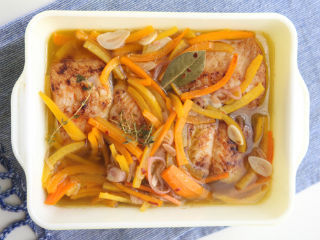 Escabèche is a Spanish method of preparing fish, first with a quick, hot sear then with a long, leisurely bath in olive oil, vinegar, herbs and spices. The vinegar finishes “cooking” the fish, producing moist, flaky flesh with a tangy, refreshing flavor. Spoon the fish and sauce over greens, and an instant salad is made.
Escabèche is a Spanish method of preparing fish, first with a quick, hot sear then with a long, leisurely bath in olive oil, vinegar, herbs and spices. The vinegar finishes “cooking” the fish, producing moist, flaky flesh with a tangy, refreshing flavor. Spoon the fish and sauce over greens, and an instant salad is made.
It’s hard to find fish recipes that taste better as the week goes on, but this is exactly the point of escabèche. You can eat it after 6 hours or so of marinating, or over the course of a week. While any type of white fish works well, always consider sardines or mackerel for escabèche. The spicy, vinegary sauce tames the strong flavor of fatty fish. High levels of healthy omega-3 fats and low mercury levels make fresh sardines and mackerel the perfect fish to consume. And now, you have another easy and delicious way to serve them.
Servings: 4
Time in the Kitchen: 25 minutes, plus at least 6 hours to marinate
Ingredients:
1 pound/450 g white, flaky fish cut into 4 pieces, or 8 whole sardines or mackerel, filleted
¼ teaspoon smoked paprika (1.2 ml)
1 tablespoon unsalted butter (15 ml)
2 tablespoons plus 2/3 cup extra virgin olive oil, divided (30 ml/160 ml)
2 shallots, thinly sliced
2 garlic cloves, thinly sliced
2 bell peppers, seeded and cut into thin strips
½ cup white wine or red wine vinegar (120ml)
½ teaspoon kosher salt (2.5 ml)
2 bay leaves
6 thyme sprigs
½ teaspoon red pepper flakes or 1 hot chile, thinly sliced (2.5 ml)
2 tablespoons chopped parsley (optional) (30 ml)
Instructions:
Season fish with paprika a generous sprinkle of salt.
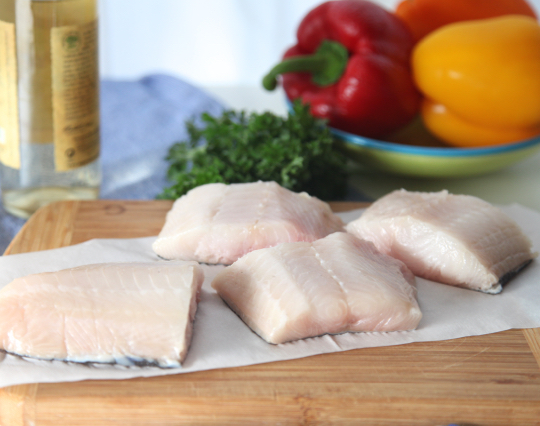
Melt butter and 1 tablespoon (15 ml) olive oil in a skillet over medium-high heat. Sear the fish on both sides until lightly browned, about 2 minutes per side. The fish should be browned, but not cooked through. Remove from the skillet and place in a glass or ceramic dish just big enough so the fish fits snugly.
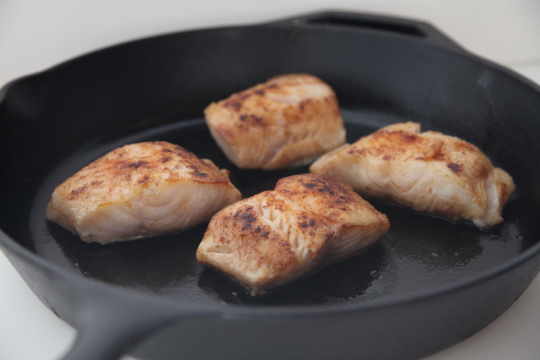
Wipe out the skillet to remove any black bits of fish leftover. Heat another tablespoon of olive oil over medium heat. Add shallots, garlic and bell peppers. Cook just long enough to soften the shallot and bell pepper, about 4 minutes. Add the vinegar, salt, bay leaves, thyme sprigs and red pepper flakes. Bring to a low simmer for 5 minutes then add the remaining ¾ cup olive oil.
Pour the hot mixture of oil and vinegar over the fish, making sure most, if not all, of the fish is submerged. Cool to room temp. Cover with plastic wrap and refrigerate at least 6 hours before eating. The fish will stay fresh and can be eaten over the next 3 to 5 days or so.
Sprinkle parsley on top before serving.





August 28, 2015
In the Best Shape of My Life at 40 Years Old
It’s Friday, everyone! And that means another Primal Blueprint Real Life Story from a Mark’s Daily Apple reader. If you have your own success story and would like to share it with me and the Mark’s Daily Apple community please contact me here. I’ll continue to publish these each Friday as long as they keep coming in. Thank you for reading!
 First off, thank you for starting Mark’s Daily Apple, my starting point after wanting to give up on my quest for a healthy life. It was May, 2014, when I spent hours reading posts and success stories on your site. The Friday success stories gave me the solid belief I needed. Thanks so much to all that share their journeys. It’s been over a year now since I switched to the primal lifestyle, 50+ lbs. lighter and in the best shape of my life at 40. Grok On!
First off, thank you for starting Mark’s Daily Apple, my starting point after wanting to give up on my quest for a healthy life. It was May, 2014, when I spent hours reading posts and success stories on your site. The Friday success stories gave me the solid belief I needed. Thanks so much to all that share their journeys. It’s been over a year now since I switched to the primal lifestyle, 50+ lbs. lighter and in the best shape of my life at 40. Grok On!
Here’s my story.
Even from a young age I can remember having to deal with being overweight. It started around 4th grade when I became a fatty and it lasted until the end of 11th grade. I joined the Oklahoma National Guard my junior year of high school. That summer I went to Army basic training and my fat ran off crying. I thought to myself at that moment in time, finally I’m not a fatty anymore. Regretfully it didn’t last that long and the fat came back laughing in my college years.
At my heaviest in my early 20s, I can remember being around 235-240 lbs. Let’s see pizza, beer, and repeat. Beer, pizza, and repeat… the college diet of champions. Then my clothes started shrinking so I did what “Conventional Wisdom” taught me to. I turned to magic pills, drank shakes like water, ate low-fat, whole grains and worked out like crazy in the gym including chronic cardio and I managed to knock 25 pounds off. I kept up the pursuit of ideal weight and image for a while but I never managed to achieve my goals.
After graduating from college, I joined the Army and moved to Europe. I was stationed in Belgium and was lucky enough to serve my full enlistment obligation of 6 years in-place. The downside to this was that Belgium is known for great beer and chocolate, but I had to maintain my composure since I was a soldier. During my tour I married an English girl from London and we started a family (son & daughter). I was always able to meet Army weight standards but it wasn’t without a constant struggle of yo-yo dieting and chronic exercising, which resulted in various back pains, Chondromalacia Patella, Metatarsal Phalangeal, Achilles Tendonitis, Osteoarthritis and Plantar Calcaneal Spur (bad knees & foot problems).
At the end of my enlistment I took a federal position in Belgium and started to enjoy myself with the Army standards off my back. Let’s see beer, chocolate and repeat. Chocolate, beer and repeat… the diet of Belgian champions. Many years went by, we left Belgium in 2011 and moved to San Antonio. Over 10 years had passed since I lived in the States and I was ready to go on my restaurant crusade! I restored my former glory of 235-240 lbs and my medical issues had reached the point of me struggling with the life basics. I needed help, so I went to experts for treatment. Here are a few: chiropractor/podiatrist therapies, an assortment of pills, X-rays, MRIs, acupuncture, cortisone injections, draining fluid, walking boots, crutches, custom shoe inserts and even surgery recommendations.
Then one day – I remember it perfectly in June, 2013 when I was given a printed photo at the end of the school year of my kids and me on their first day. At 38, I was truly un-happy, looking at the middle aged, broken, overweight man in this picture. I realized at that moment that I’d finally had enough and wanted to do something about my unhealthy lifestyle. I told my wife that day that I wanted to change and that I was going to do it this time, but my credibility wasn’t great. I’d told her the same thing more than a thousand times before, and I’m certain she didn’t believe me this time either. Her response; “I love you the way you are and accept the fact that you are getting older.” Maybe you’ve heard this before?
My profound desire for change, and I did nothing. Yep, that’s right, nothing for four months! While looking for help with life direction in November, 2014, I stumbled onto Brian Tracy and purchased one of his books called Maximum Achievement. When I finished the book later that day, I remember filling my car with premium fuel and I thought to myself – I care more about what I put in my car than what I consume.
I started immediately the next day, December 2, 2014, with a very similar “Conventional Wisdom” routine that I followed in my college years, but this time it didn’t seem to be working as well. After five months of dedicated effort at five days per week, with one hour minimum routines, it was already April 2015 and I had only lost 4-7 lbs (variable day to day), and I was in a lot of pain. That month I was introduced to Mark’s Daily Apple after complaining to a co-worker about my progression of getting in shape and various health issues. I read so many MDA success stories that I lost count! I was convinced and wanted to learn more so I purchased The Primal Blueprint, The Paleo Solution and The Paleo Kitchen.
My paleo lifestyle started the end of April 2015 at 228-230 lbs with health issues. I cut out SAD foods, bread, pastas, processed foods, etc., and noticed a change in my body within a few weeks, along with higher energy levels. The first 90 days I was down 13 lbs. Since I was in pain I didn’t add any exercise and to be honest, I was burned out on the gym anyway. I couldn’t believe it I lost double the weight from Dec-Apr and without exercise. During this time frame I was 100% paleo, and afterwards I went 85/15 on the account I still love red wine and pizza occasionally (gluten free dough when available).
I added the recommended exercises from The Primal Blueprint two times per week, of 20 minute routines at the end of July. August (down 13 lbs.) September (down 11 lbs) October (down 9 lbs) November (down 7 lbs) and my weight now, for the first time in my life, is stable at 175-178 and my health issues are fading away. I feel great; I’m stronger (started at 2 pull-ups now 20), my blood results have come back shining, energy levels off the charts and sex drive has increased to rocket levels. I had my share of critics but results speak for themselves and the smart ones followed my lead.
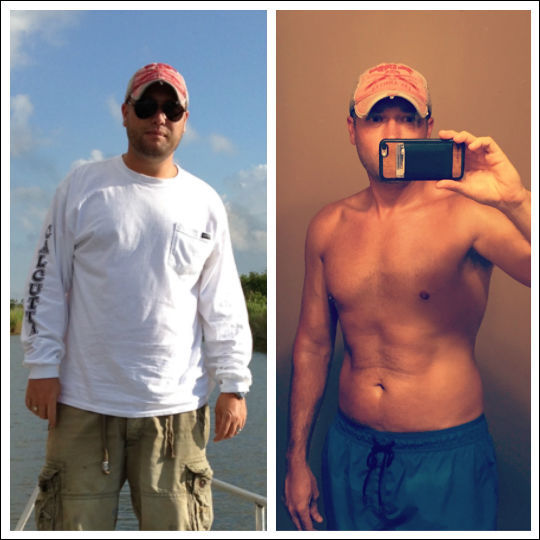
The most unexpected result was I stopped snoring! I’m still in shock over this one. To give some insight on my snoring, it was so bad that the first time I visited my wife’s family before we married, her mother heard me and said to her, “You will have to live with that noise. Are you sure you can do it?” I know it was that loud. Embarrassing right?
I’d like to thank my wife for changing her lifestyle and supporting me completely, love you.
What an amazing journey so far and fresh start for living a better life. Thanks so much MDA community!
Jason




August 27, 2015
Introducing Don’t Just Sit There!
 Today’s an exciting day for me. One of those jump out of bed early in anticipation of what’s to come days. Today is the day I get to announce the launch of Primal Blueprint’s Don’t Just Sit There program, packaged and perfected with my friend and world-renowned biomechanist Katy Bowman. But before I gush over Katy and the program, let me first set the stage.
Today’s an exciting day for me. One of those jump out of bed early in anticipation of what’s to come days. Today is the day I get to announce the launch of Primal Blueprint’s Don’t Just Sit There program, packaged and perfected with my friend and world-renowned biomechanist Katy Bowman. But before I gush over Katy and the program, let me first set the stage.
The Problem with Sitting
You’ve probably heard that sitting is bad for your health. Shocker. Research is showing that prolonged sitting increases your risk for chronic disease—cardiovascular disease, obesity, diabetes, cancer…and on and on.
But Mark’s Daily Apple folks are health conscious, active, hit the gym five times a week, sweat it out in CrossFit, so the sedentary scare doesn’t really apply to us. Oh, but yes it does!
If you spend most of your time behind a desk (researchers clock it in at 8+ hours), then your hour-long exercise session isn’t protecting you from the disease risk of sedentary living. That’s because our bodies evolved to participate in varied physical movement throughout the day—the key word being varied. So even those who participate in active jobs that have us on our feet—nurses, contractors, teachers—aren’t truly protected. They’re just engaging in repetitive tasks that utilize only a fraction of their joints and muscles, which puts them at risk for overuse injuries and assorted health problems over the long haul.
The Solution to the Sitting Scare
Many of you have probably been proactive and are already happily reading this behind a standup desk or a treadmill desk, logging in several miles a day as you work. This is commendable, but ultimately not the healthiest solution. The problem goes back not to sitting per se but to unvaried physical movement. So if you trade eight hours of sitting with all day standing marathons in pretty much one position you’ll be no better off, and more tired, stiff and sore.
Anytime you have prolonged stillness (be it sitting or standing), you are putting undesirable “loads” upon certain parts of your body that can lead to pain, dysfunction, and disease.
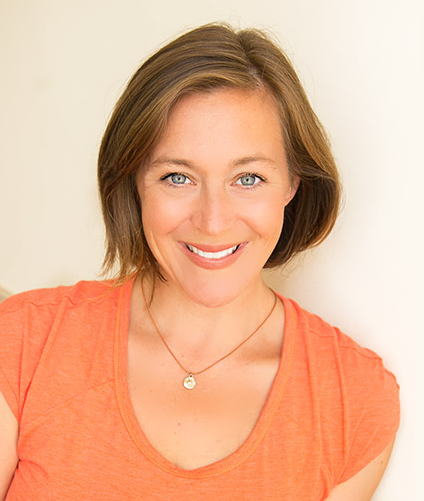 As I did more and more research on the sitting epidemic, and the subsequent standup desk revolution, I realized that finding the best solution is more physiologically nuanced than just standing up or taking an extra walk around the block every day (although these things don’t hurt). So I reached out to Katy Bowman, because who better to answer all my body alignment questions than an expert on the structure of the human body?
As I did more and more research on the sitting epidemic, and the subsequent standup desk revolution, I realized that finding the best solution is more physiologically nuanced than just standing up or taking an extra walk around the block every day (although these things don’t hurt). So I reached out to Katy Bowman, because who better to answer all my body alignment questions than an expert on the structure of the human body?
In case you aren’t already familiar with her work, Katy is Director of the Restorative Exercise Institute, which offers science-based educational and movement courses for groups, individuals, and online. Katy is also a popular blogger at KatySays.com, and the best-selling author of one of my favorite books, Move Your DNA: Restore Your Health Through Natural Movement.
When I asked Katy for her perspective on the sitting problem she explained:
I’d break the problem of sitting into two categories. On one hand, there is the stillness. You are not moving so all of the systems in your body that depend on movement and the gravitational load to get things flowing aren’t happening.
But then there is the second piece that I like to call the geometrical problem. So it is not just that you are still; it is that when you are still, you are always assuming exactly the same position. You adapt to what you do most frequently and so you have all these changes in your physical structure like the length of your muscles, some getting longer, some getting shorter. You have lower input of what your weight is as far as your bones are concerned, so your bone density adjusts accordingly.
One of the reasons that “Sitting Kills” is not one of my favorite headlines is because the natural solution is “Great. I’ll stand up. Awesome. Problem solved.” But what happens when you take your poor geometry that has adapted to sitting—which includes the effects of shoes and belts and wallets—and put it under a greater load standing?
She answers that question and many more in the Don’t Just Sit There program.
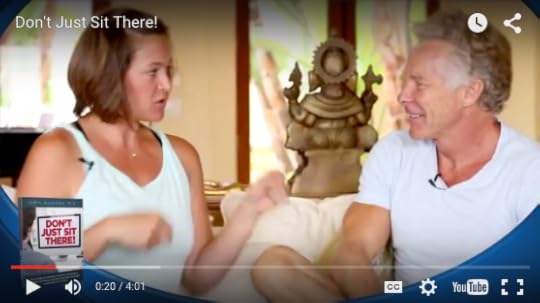
So I partnered with Katy to develop the Don’t Just Sit There program, an online multimedia course full of expert solutions for curing chronic pain and reversing the damage done from decades of sitting.
Here’s what Katy and I cover in the program:
How to build the perfect workstation with respect to budgetary concerns
The ultimate sitting makeover to align your spine and alleviate chronic pain and discomfort
How to stand better, including a 8-point alignment check
How to “work out” on company time
You’ll learn how to boost productivity and get back in alignment with the:
Don’t Just Sit There eBook written by movement master Katy Bowman
Audiobook of the Don’t Just Sit There eBook for listening on the go
10 instructional videos to guide you through optimal body alignment—including a yoga tune up ball therapy video from Dr. Dawn McCrory and Coach Kimmie Smith that will help you calm inflammation, eliminate tension, and increase mobility
Detailed video discussion between Katy and me
Don’t Just Sit There Shopping Guide eBook to help you build the perfect workstation
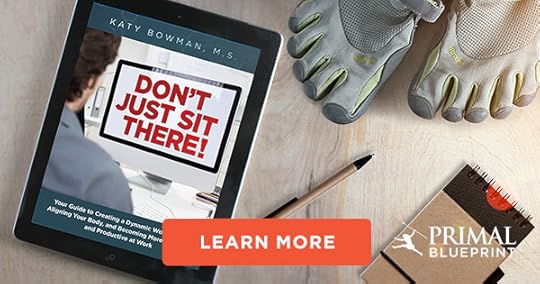
We’re also throwing in several complementary bonus items, most of which are only available through September 2, including:
Amazing Feets! to guide you on a more barefoot-dominated journey
Isometrics Strength eBook, Workout Plan, Training Logs and Videos by Todd Kuslikis
Exuberant Animal: The Power of Health, Play and Joyful Movement eBook by Frank Forencich
Exuberant Animal Play Book: Secret Moves and Games of the Play Masters eBook by Frank Forencich
The complete program retails for $37, but in honor of the launch we’re giving it away at the discounted price of $27—and a risk-free money-back guarantee if you’re not completely satisfied.
Click here to take advantage of this limited-time offer. And in the mean time, sit down, stand up…vary your position all day long, every day.




Mark Sisson's Blog
- Mark Sisson's profile
- 199 followers




